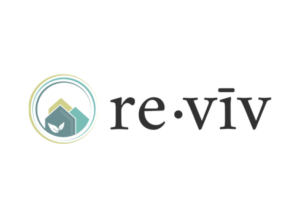Any deal can look good on the surface. As investors, we often try to convince ourselves we’ve found a great opportunity. It could be an undervalued property with great potential, or a high-spec apartment building that has renters queueing round the block.
But the truth is our unconscious cognitive biases can lead us astray and even lead to big financial losses. Failing to accurately assess real estate deals is a risky mistake.
So, how can the average investor analyze multifamily investment opportunities like a pro? In this article, we share the 10 key factors you need to look at when analyzing deals.
We’ll examine the main financial metrics you must take into account, and explore how you can leverage local knowledge to assess potential. Finally, we’ll show you how to avoid the biggest mistakes real estate investors make when picking deals to help you choose the best opportunities for you.
Looking to get started with your first multifamily investment?
re-viv helps investors drive growth with actionable multifamily investment strategies. Get in touch now.
10 Factors to look for when analyzing a multifamily opportunity?
When you first start analyzing multifamily real estate deals, you’ll want to begin by taking a good hard look at the general metro data. Are young professionals flocking to a particular city because of its booming tech scene? Or is a neighborhood trending with families thanks to its great schools and slower pace of life?
Understanding current trends will help you get a sense of where the best opportunities are and identify any over-hyped deals in metro areas that have plateaued or are in decline. You’ll then be ready to analyze each investment property with the factors below to see if it’s a good fit for your investment goals.
- Supply-Demand Statistic for your product in your market and sub-market: I put this one first because the laws of supply and demand are guiding principles we’ve all known about since we were taught basic economics in high school or college. They’re also critical as a lens through which each investor views the various types of real estate investments which drive a lot of the other metrics (vacancy, cap rate, rent growth).
- First: Arm yourself with the right, accurate information: Big real estate firms like CoStar, Real Page, the National Association of Homebuilders, Reis Inc. and the National Multi Housing Council provide outsized data and reporting. While they can be expensive, the data they provide is invaluable. Just as you wouldn’t buy a stock without reading the financials and knowing something about the market for that product or service, the same should be said for investing in real estate. Google is your friend here and if you have an existing relationships with brokers can often gain you access to these platforms. Lastly, if you have distinct local knowledge about a specific neighborhood or market, start there.
- How do I evaluate it? If you’re purchasing an existing building, which we presume most would, understanding the current amount of inventory available is easy and doesn’t always require access to big data sources. Apartments.com, craiglists, zillow can all provide this info. That said, things like deliveries for that apartment style and class [link to other sub-article on Class A, B, C properties]. Deliveries being a fancy term for “how many new apartments have been constructed” in that metro and in particular, that neighborhood or adjacent neighborhood. For example, buying a brand new four unit building with no amenities and limited cash flow in a high demand market like LA may seem like a safe investment. That is, unless a local developer is building a mid-rise, 200-unit apartment building two streets down with a gym, cafe and grocery store. That may have a negative impact on your ability to fill new apartments that become available.
Are the numbers looking good so far? Then it’s time for some local knowledge. Ask these kinds of questions to understand housing supply and demand in the neighborhood or metro area:
- Is there a thriving tech or startup scene that’s attracting big numbers of highly-skilled young workers?
- Are there already loads of apartment complexes just like this one? Or large developers in the area with big building plans?
- Are affordable rents here attracting commuters from more expensive cities nearby?
- If there are very few high-spec apartment blocks in a less-desirable area, is there really enough demand to fill this one?
Markets where demand significantly outstrips supply can serve up promising opportunities for real estate investors. The key is to identify areas that are starting to trend amongst renters rather than neighborhoods that are already highly desirable and expensive. This way you can get in early at a favorable price and benefit from both capital growth as the property goes up in value and rent increases in the mid to long term. That’s why we found the best markets for multifamily investing and compiled them into a list.
Capitalization Rates
The “cap” rate is a common financial metric that’s calculated by dividing income after expenses (known as the net operating income) by the overall property value. It’s often used to compare multifamily investment opportunities. Cap rate is inversely related to the property value, so the higher the cap rate, the lower the value if operating costs remain similar.
Cap rate can also be an indicator of risk—higher cap rate deals may be located in less-desirable areas or require extensive renovations to increase the property value. On the flip side, deals with a higher cap rate can offer more upside for investors who’re happy to take on greater risk.
Net Operating Income (NOI)
If you’ve already spent time researching multifamily property deals, you’ve probably come across NOI or Net Operating Income figures. This is simply the annual profit you make on a property. It’s calculated by subtracting total operating costs from the total income.
NOI can be a useful way to gauge and compare your profitability across several deals. The biggest factors determining NOI are your rental income and any operating costs. Higher rental income and lower expenses equal better NOI. But it’s also possible to increase NOI by adding extra income streams such as laundry facilities or parking lots.
Cash Flow
This straightforward number is the cash you have leftover each month after all your operating expenses are paid. It’s calculated by subtracting expenses from the gross rental income. Unlike NOI, cash flow also makes allowances for future expenses. So if you know you’ll need to replace the roof in a year or two, you can factor this into your monthly cash flow calculations.
Increased rents or reduced vacancy rates can increase it, while renovations and rising costs due to inflation can eat into your monthly cash flow. This is a concern especially with the current inflationary environment we’re seeing in the US.
Cash-on-cash Return
Another useful metric for measuring performance is cash-on-cash return. To calculate this, you just divide annual cash flow by your initial investment. Recommendations vary, but most investors look for deals offering somewhere between 6-12% cash-on-cash returns.
Cash-on-cash returns will vary considerably depending on the property type and the market. Class C and D properties, which tend to be older properties in need of significant repairs or renovations in less desirable neighborhoods, often yield higher cash-on-cash returns than newer properties in very popular and expensive neighborhoods.
Vacancy Rates
You’ll also want to look at current vacancy rates for the property, or for similar properties in the event of a new build. High vacancy rates can hit your returns hard. They can also point to underlying issues with the property management firm, maintenance problems, or that the rents are no longer competitive for the area.
Vacancy rates vary according to property type and location. To give you a general idea of what to expect, the US rental vacancy rate was 5.8% in Q3 2021.
Note that a difference here between single-family vs multifamily investing is that having multiple units within one large building helps to cushion a higher vacancy rate.
Safety Margin
Loss of capital is a big worry for most investors. If you’re working with a real estate investment firm, ask about the margin of safety that’s been built into the deal. The best multifamily investment companies will be transparent about any risks involved and will take steps to protect their investors from significant capital loss. For example, “cash at closing” is a common way to reserve capital in case of emergencies or unexpected renovations when the deal closes.
Value-add Opportunities
Once you’ve analyzed the financial metrics of a deal, the next step is to see if there’s an opportunity to add value to the property and increase your returns. If you’re comfortable with taking on a bit more risk, Class B or C properties could be a great bet.
These could be properties that are a bit run down and need a bit of attention in order to increase the market value and raise rents. Generally speaking, the more work that’s required, the higher the risk. Another possibility is to add better amenities, such as a swimming pool, gym, or concierge service which can attract more affluent renters.
Housing Types
Who is this housing aimed at? Families, young professionals, and retirees all have different needs. Are there good schools nearby and low crime rates so families feel safe living here? Are there good quality amenities, reasonable commute times, and easy access to nightlife and entertainment for younger workers? Or are there high-end finishes and luxury features like swimming pools or a fully-equipped spa for affluent renters?
Family properties will usually require more space, say 2-3 bed units, whereas young professionals may be happy with co-living or micro-living arrangements in return for lower rents and comfortable common areas where they can socialize. Do a quick sense check to make sure the property’s facilities and key characteristics align with the target renters.
Your Financial Goals
Lastly, always check if a deal aligns with your own financial goals. Every investor has a different set of requirements and appetite for risk. Are you happy to lock away money so you can chase long-term capital growth? Or is the real estate market a way for you to secure a certain amount of regular passive income as you approach retirement?
We all have unconscious biases which can influence our investment decision-making. Having a clear idea of what you want to get out of a multifamily investment deal will help you avoid getting tempted by attractive deals that just aren’t right for you.
Mistakes to avoid when investing in multifamily opportunities.
-
Investing in an unfamiliar neighborhood
We’ve already discussed how important local knowledge is. But investors often get sidetracked by unsuitable deals that promise high returns in neighborhoods or cities they know nothing about. Having an incomplete understanding of the wider context of a deal can mean you miss out on the benefits of multifamily investing.
If you’re going it alone and not working with a real estate sponsor who can guide you, try to stick to regions that you know well. Alternatively, work with a trusted multifamily investment company that can guide you and provide you with the rationale and local insights that underpin the deal.
-
Trusting ambiguous sources for investment decisions
These days you’ll find investment advice being shared everywhere from Reddit threads to your local bar. It’s common for newer investors to be seduced by tales they hear from friends or colleagues claiming to have made a whopping 20% return on a 50k renovation project.
Emotions can mess with your investment decision-making, and you could lose a lot of money if you mistakenly invest in a scam or a bad deal. Always do your due diligence and make sure the deal is sound before you commit any capital.
-
Following your cognitive bias
Investors also get hurt when they let their own unconscious biases influence their investing. Many investors fall into the trap of trusting themselves with their money above anyone else. The truth is that even for seasoned investors there will be things that you don’t know about a particular deal.
It’s helpful to keep in mind the old saying “you don’t know what you don’t know”. If you’re new to multifamily real estate investing, speak to other investors and advisors to expose any blind spots you might have. The best strategy for new investors is to keep your eyes wide open and be prepared to change your mind as you find out more about a deal.
The Key to Successful Multifamily Investing
Now you know what to look for in a multifamily investment opportunity, you’ll be on your way to successful real estate investing. Remember to take a close look at the financial metrics and use any local knowledge you have to figure out if it’s a good deal before you part with any capital.
If you’d rather let someone else do all the hard work, consider working with a private equity firm that can help unlock multifamily investment benefits for you. re-viv scours the market to select the most promising multifamily opportunities that align with their investors’ requirements.
Their multifamily property experts make life easy for investors by sourcing and fully facilitating investment opportunities. Investors can rest easy knowing that re-viv’s experienced team is there to take care of every little detail and maximize your chances of a successful investment outcome.
Looking to get started with your first multifamily investment?
re-viv helps investors drive growth with actionable multifamily investment strategies. Get in touch now.
DISCLOSURE
The above references an opinion and is for information purposes only. It is not intended to be investment advice. Seek a duly licensed professional for investment advice.



